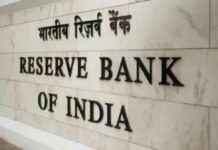The Reserve Bank of India (RBI) recently made significant changes to loan exposure limits for Urban Co-operative Banks (UCBs), setting a 25% cap on housing loans for individuals. This move aims to provide UCBs with increased operational freedom while ensuring regulatory oversight. Under the previous guidelines, UCBs were restricted to a total exposure of 10% of their assets for housing, real estate, and commercial real estate loans, with an additional 5% allowance specifically for housing loans to individuals.
In an effort to enhance flexibility without compromising regulatory objectives, the RBI has now mandated that UCBs must adhere to new prudential norms. One key requirement is that UCBs’ total exposure to the real estate sector, excluding individual housing loans, should not exceed 5% of their total loans and advances. These revised guidelines are designed to strike a balance between empowering UCBs to operate more freely and maintaining the necessary safeguards to protect the financial system.
Revised Definition of Small Value Loans
As part of the updated regulations, the RBI has also revised the definition of small value loans for UCBs. Loans valued at no more than Rs 25 lakh or 0.4% of their Tier I capital, whichever is higher, are now classified as small value loans, with a ceiling of Rs 3 crore per borrower. By March 31, 2026, UCBs are required to ensure that at least 50% of their total loans consist of small-value loans, capped at Rs 25 lakh or 0.2% of their Tier I capital, with a maximum limit of Rs 1 crore per borrower. These measures are aimed at promoting financial inclusion and supporting borrowers with smaller funding needs.
Classification of UCBs into Tiers
Furthermore, the RBI has categorized UCBs into four tiers based on their deposit size, ranging from smaller unit UCBs to larger institutions with deposits exceeding Rs 10,000 crore. This tiered approach helps to differentiate regulatory requirements based on the scale and complexity of UCB operations. The minimum Capital to Risk-Weighted Assets Ratio (CRAR) for UCBs varies between 9% to 15%, with Tier-4 UCBs mandated to comply with Basel III norms, reflecting the importance of maintaining adequate capital buffers to absorb potential losses.
In conclusion, the RBI’s decision to revise loan exposure limits for UCBs represents a strategic effort to balance risk management with operational flexibility in the banking sector. By setting specific thresholds for housing loans, real estate exposure, and small value loans, the central bank aims to promote responsible lending practices while enabling UCBs to meet the evolving needs of their customers. These regulatory changes underscore the ongoing commitment to maintaining a stable and resilient financial system that can support economic growth and financial inclusion for all.
Published on: Feb 24, 2025, 9:59 PM IST. Copyright©2025 Living Media India Limited. For reprint rights: Syndications Today.























